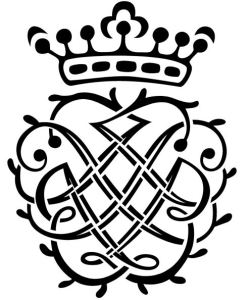CONCERT: Antidotum Arachne
Palisander
St John’s, Smith Square. 16 February 2017
CD: Palisander Beware the Spider!
PALG-33. 37’51
 The St John’s, Smith Square Young Artists scheme gives emerging soloists and ensembles a platform to showcase their talents through three SJSS concerts, a chance to commission new music, and opportunities to develop skills in marketing, education and outreach. The latest batch of six (for the year 2016/17) includes the recorder quartet Palisander. They already seem pretty adept at marketing, and took the opportunity of the first of their three concerts (given under the title Antidotum Arachne) to launch their debut CD, Beware the Spider!.
The St John’s, Smith Square Young Artists scheme gives emerging soloists and ensembles a platform to showcase their talents through three SJSS concerts, a chance to commission new music, and opportunities to develop skills in marketing, education and outreach. The latest batch of six (for the year 2016/17) includes the recorder quartet Palisander. They already seem pretty adept at marketing, and took the opportunity of the first of their three concerts (given under the title Antidotum Arachne) to launch their debut CD, Beware the Spider!.
The concert and (rather short) CD explore the world of the Tarantella, a curious aspect of folk medicine in 16th and 17th century Italy where victims of venomous spider bites were not offered any medicinal cure or relief but were regaled by local musicians (often funded by the municipality) with a variety of musical pieces, some known as Tarantella, intended to cure them of their otherwise fatal symptoms. In a well-chosen and varied programme, Palisander’s CD and concert reflected aspects of the various symptoms along with arrangements of original Tarantellas by Miriam Nerval, who also provided the programme notes for the CD and concert. For a few of the pieces they were joined by Toby Carr, playing theorbo and baroque guitar.
 The four members of the group (Hannah Fisher, Lydia Gosnell, Miriam Nerval, and Caoimhe de Paor, all graduates of the Guildhall School of Music and Drama) took it in turns to introduce the pieces with fascinating contemporary descriptions of the effects of the spider’s bite and other medicial oddities. The latter included a suggestion that asthma could be cured by swallowing a frog, greasing it with butter to aid its descent. Only one brief example of these verbal interjections is included on the CD, at track 12, with Kircher’s Antidotum.
The four members of the group (Hannah Fisher, Lydia Gosnell, Miriam Nerval, and Caoimhe de Paor, all graduates of the Guildhall School of Music and Drama) took it in turns to introduce the pieces with fascinating contemporary descriptions of the effects of the spider’s bite and other medicial oddities. The latter included a suggestion that asthma could be cured by swallowing a frog, greasing it with butter to aid its descent. Only one brief example of these verbal interjections is included on the CD, at track 12, with Kircher’s Antidotum.
Amongst the many highlights of the concert were Miriam Nerval’s clever arrangement of Vivaldi’s La Notte (the ‘Nightmare Concerto’) and two works by modern composers, Maki Ishii’s Black Intention IV, and Dick Koomans The Jogger. Only the Vivaldi is included on the CD. Intention IV conjured up dark images related to events in Japan’s 20th century history. The opening is built on a four-note motif before rising scales lead to a climactic scream. Dick Koomans The Jogger reflects what the title suggests, with its fast, rhythmic, and sometimes literally breathless energy. Both fine examples of the burgioning repertoire of contemporary music for recorders.
Technically and musically Palisander were outstanding, the four players demonstrating an enviable professionalism, not leasr in playing almost entirely from memory. One of the issues of recorder consorts is the shere logistics of managing and sharing so many instruments, but Palisander managed this well, moving more-or-less seamlessly from piece to piece. They were helped by a very enthusiastic audience whose frequent whoops and yelps and an attempt at encouraging a final standing ovation hinted at a strong turn out of relatives and friends.
For reasons that I have never understood, recorder players and consorts have often been seen as the Cinderellas of the early music world, despite there being several extremely talented and succesful players. As an example, I remember the organiser of a major UK early music competition opining that a recorder consort ‘would never win’. But the recorder is, apart from the voice, one of the most directly controlled of all musical instruments and probably the one best known from childhood. I have used recordings of organ pieces played by recorder consorts during workshops to encourage organists to try (through touch and articulation) to emulate the subtlety that recorder players can achieve. In recent years they have justifiably gained a much higher profile, examples being Charlotte Barbour-Condini (who I noticed in the audience) who became the first recorder player to reach the concerto final of the BBC Young Musician Competition in 2012, and Tabea Debus, recipient of an earlier St John’s, Smith Sqaure Young Artist residency. Palisander are a very worthy part of this resurgence.
I am not sure how available the CD is through the normal outlets, but it can be ordered through their website here. On the same page, you can also see a short film about the CD and programme. They return to SJSS on 2 April (3pm) and 15 June (1.05).

One thought on “Palisander: Beware the Spider!”